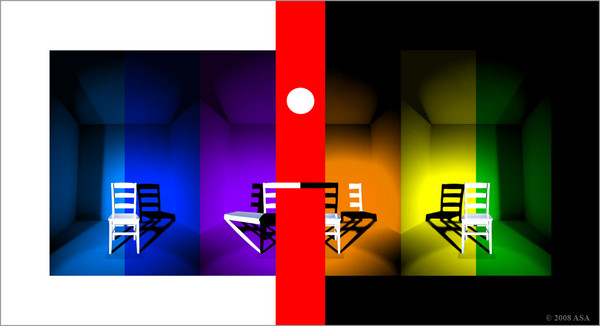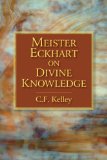Adi Da’s artistic sensibility can be identified as Modernist or perhaps Neo-Modernist and as such he lingers and focuses his work on a highly formal vocabulary, paring his shapes down to circles, or fractions thereof, squares and triangles.
marirea penisului
“Tacit Glimpses”: A Review of Adi Da Samraj’s “Transcendental Realism” and “Aesthetic Ecstasy”
Page 2 of 4 pages « First < 1 2 3 4 > Last » - Full Article
As a young man Adi Da studied Gertrude Stein, and, as much as I avoid the biographical view, he has distilled her essence in image-repetitions that ultimately dissolve any fixed notion of what we are seeing. A context for Adi Da’s visual aesthetic can also be found in Kazimir Malevich’s purity of geometric form, Kandinsky’s harmonic improvisations, and Picasso’s and Braque’s Cubist investigations of multidimensional space; similarly, these artists wrote compellingly about their visions. Artistically aligned with the basic strategies of modernism, in his writing Adi Da calls for a “new-old” kind of “Conscious Light”.

Image: The “First Room” Trilogy I, 2006 (from Spectra Ten)
Adi Da’s writings, though they arise from his own direct spiritual experience, seem nonetheless informed by Asian spirituality, Western Platonic notions of art, and echoes of cognitive, perceptive and psychological theory. Still, the writing is as much poetry as a meditation on the fundamental nature of art, and understanding it will depend on your ability to allow his words to encompass specific and multiple meanings. Adi Da’s aesthetic philosophy compresses language in a style that many will find demanding, but readers will find these essays well worth the effort. This compressed ‘morse code’ becomes a leitmotif of the writings, recalling the meditations of the young Giorgio de Chirico, whose illuminated experiences provided the impulse for his enigmatic paintings. Indeed, while Adi Da’s aphorisms run parallel to the kind of thinking expressed by artists for whom perceptions appear intuitively, we also find in them reflections arising from an expansive inquiry into art and spiritual experience. Both publications include a glossary that introduces you to basic elements of the artist’s philosophy. Perhaps the best entry point comes with the essays collected in “Aesthetic Ecstasy”, a critique of the art world written in language more familiar to a general audience.
I found Adi Da’s rejection of the art market’s commodity a welcome criticism of the superficiality and abstruse discourse currently dominating the art scene. Ironically, in Canada, where I live, artists are workers in the “cultural industries”—an essentially socialist idea that nonetheless bases itself on economics, changing the role and perception of the artist from café-society slouch to that of a “cultural worker”. Commodity, developed through the system of galleries, museums, art fairs, and granting systems, has become a kind of inescapable black hole for art. Taking apart the art world’s conventions, Adi Da argues convincingly for art to become instead the means for an authentic transformative experience. Living far from the centers of commerce, he has a detachment that allows an understanding of the system, and the spiritual conviction to make his ideas known. Artists who deeply feel the sensual and spiritual energy of creativity will undoubtedly embrace his view.
Adi Da’s incisive critique of contemporary art’s cleverness and superficiality lays bare a reality many recognize but are too intimidated to express. With his pointed description of the media-driven mindset employed by museums, Adi Da shows how these institutions have come to dictate how we should feel and what we should think about art. His wit cunningly uncovers issues many artists choose to ignore. While some curators object to these psychological controls, it is, as Adi Da points out, mainly in the art world where art becomes intellectualized. Tellingly, he compares this to the gut feeling and direct emotion that modern music still manages to evoke in contemporary audiences, leading us to wonder what forces the creative spirit into the cynical circuit of art world accounting.
Adi Da’s notion of “image-art”—the perceptual threshold where art merges surface and symbol—is liberating for artist and audience alike. Although evocative, images, like feelings, are unquantifiable. Freeing his “participant” to experience the poetry of images without conceptual definition, Adi Da rejects contemporary culture’s love of surface, its dependence on representational narrative. For Adi Da, art has the potential to illuminate consciousness—to give form to the “aesthetic ecstasy” of engagement. He writes,
My image-art functions entirely in the context of perceptually based whole bodily (or total psycho-physical) participation. My image-art has no political purpose or function. My image-art does not, itself (or by intention), represent any system of academic comparisons and historical accounting. . . My image-art is the “subjective“space of participation for whoever participates in it.
Adi Da proposes that the expression of feeling in form allows a boundary-less aesthetic—an unmediated engagement with the participant. It is an idea of image-art that will no doubt be welcomed by many artists who strive to make images but who feel caught in the tension between consumerism and materialism.
Adi Da’s art eschews the Western development of linear perspective, as well as the more recent use of formalism, that turns the aesthetic experience itself into an art object. In his art, the world is a mutable place where no single viewpoint dominates. Both representational and formal streams have merit when handled by illuminated artists—from Vermeer to Rothko or Wang Wei—but, according to Adi Da, even representational art is too conventional to effect transformation. Moreover, our obsession with stylistic categories, he says, obstructs direct experience of art. True art, on the other hand, leads inevitably to “aesthetic ecstasy”. Adi Da’s challenging of conventional ideas can make for some dense reading, but its cumulative effect has force.
Page 2 of 4 pages « First < 1 2 3 4 > Last » - Full Article
Page {current_page} of {total_pages} pages {pagination_links}
{/simplepaginate}









